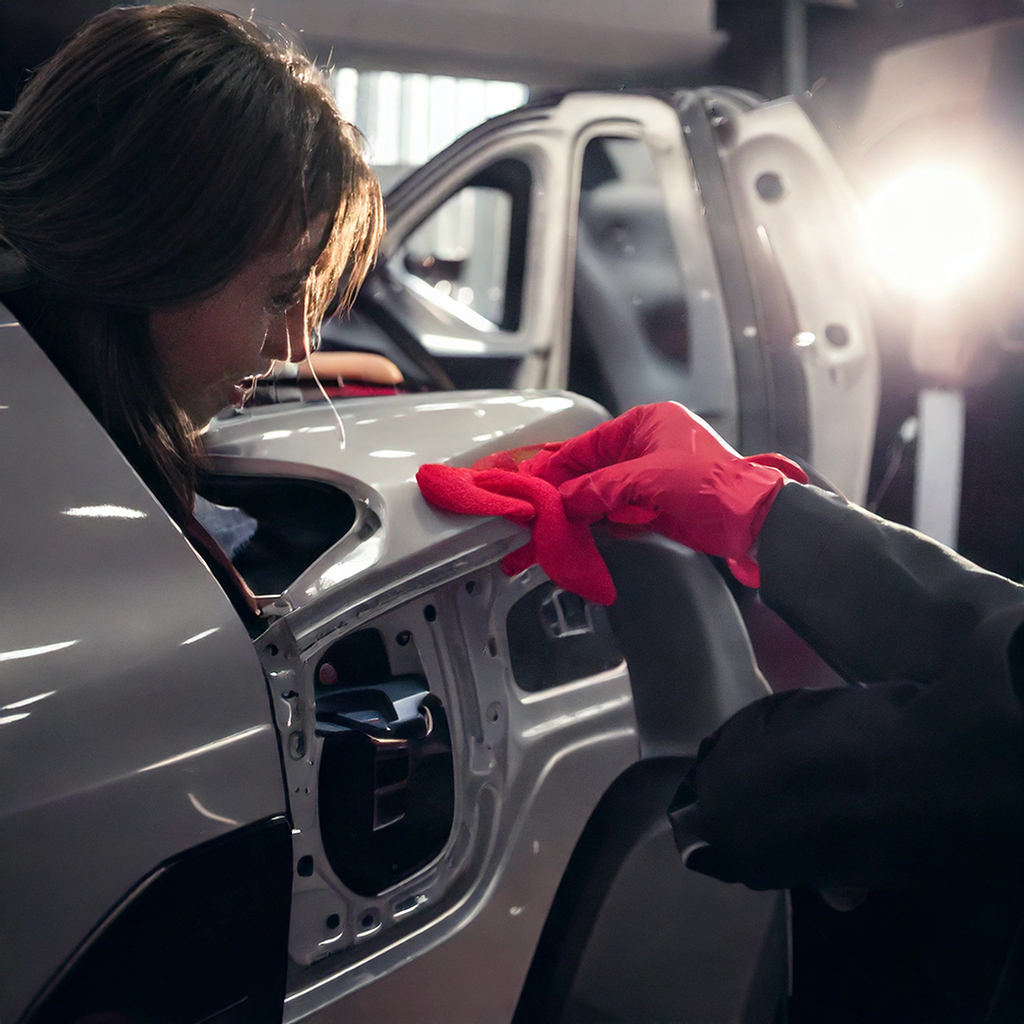In today’s environmentally conscious world, even car repairs present opportunities to make greener choices. Paintless Dent Removal (PDR) stands out not only for its cost-effectiveness and quality results but also for its significant environmental advantages over traditional body repair methods. Here’s how choosing PDR helps reduce your carbon footprint while keeping your vehicle looking great.
Eliminates Chemical Usage
Traditional auto body repair involves a substantial chemical footprint:
- Body fillers containing polyester resins and hardeners
- Primers with volatile organic compounds (VOCs)
- Solvent-based paints and clear coats
- Chemical paint strippers and cleaners
- Various solvents used throughout the process
PDR eliminates the need for these chemicals entirely, as the process requires no fillers, primers, or paints whatsoever. This reduction in chemical usage means fewer toxins entering the atmosphere and water supply.
Reduces Energy Consumption
Conventional dent repair is surprisingly energy-intensive:
- Paint booths require powerful ventilation systems and baking lamps
- Compressors for spray equipment run continuously
- Drying and curing processes consume significant electricity
- Heat lamps used for accelerated drying add to energy usage
By contrast, PDR requires minimal energy—typically just lighting and occasionally small electrical tools. This dramatic reduction in energy usage translates directly to a smaller carbon footprint for your repair.
Minimizes Waste Generation
The waste stream from traditional body shops is substantial:
- Discarded sandpaper and abrasives
- Empty chemical containers
- Masking materials (paper, plastic, tape)
- Overspray and excess paint
- Contaminated rags and disposable protective equipment
PDR generates virtually no waste products beyond occasional glue tabs used in some techniques. This near-zero waste approach aligns perfectly with sustainable business practices.
Extends Vehicle Lifespan
Environmental impact isn’t just about the repair itself—it’s also about the overall lifecycle of your vehicle:
- Preserving original factory finishes helps maintain vehicle value
- Maintaining structural integrity without compromising metal strength
- Avoiding potentially harmful fillers that may deteriorate over time
- Preventing future corrosion issues that can lead to premature vehicle retirement
By maintaining your vehicle’s original condition, PDR helps extend its useful life, which is one of the most environmentally positive choices a vehicle owner can make.
Reduces Part Replacement
Traditional repair sometimes involves replacing entire panels rather than repairing them:
- Manufacturing new parts requires raw materials and energy
- Shipping replacement parts adds transportation emissions
- Discarded panels often end up in landfills
- Paint matching for new panels requires additional materials
PDR restores existing panels, eliminating the environmental impact of manufacturing, shipping, and disposing of replacement parts.
Supporting Sustainable Business Practices
By choosing PDR providers like Dent Doctor, you’re supporting businesses that have made conscious decisions to offer environmentally preferable services:
- Lower overall resource consumption
- Reduced workplace hazards for employees
- Smaller facility footprint requirements
- Less impact on local air and water quality
Making Green Choices in Auto Repair
Every consumer choice has environmental implications. When your vehicle sustains dent damage, choosing PDR represents a conscientious decision that aligns with environmental stewardship without compromising on quality.
At Dent Doctor, we’re proud to offer a repair solution that not only delivers superior results for your vehicle but also minimizes environmental impact. Our commitment to sustainable practices is just one more reason to choose paintless dent removal for your vehicle’s needs.
Next time your car sustains a dent or ding, remember that your repair choice matters—not just for your wallet and vehicle, but for our planet as well.






